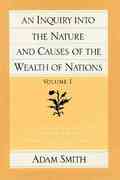Question
Consider a two period economy without investment but with variable hours of work N0. In this economy, the aggregate (inverse) labour supply function is w
Consider a two period economy without investment but with variable hours of work N0. In this economy, the aggregate (inverse) labour supply function is w s 0 = 2 + 0.3N0 + 0.2C0 and the aggregate consumption function is
C 0 (r) = 0.6(Y0 G0) + 24/(1 + r)
Aggregate output is produced according to Y0 = z0N0. It follows that firms are willing to hire any amount of labor at wage w d 0 = z0. The government spends G0 = 100 in period 0 which is entirely financed by lump sum taxes T0. Assume that labour productivity z0 is equal to 15.
(a) Suppose that C0 = 50. Draw the inverse labor demand curve (i.e. w0 against N0). Would consumers accept to work if w0 = 10 ?
(b) Find the equilibrium value of N0 and the equilibrium wage w0, given C0.
(c) Suppose that N0 = 10. Find the equilibrium interest rate r and aggregate consumption in this case. Illustrate with a graph.
(d) What do you conclude from (a), (b), (c)? Explain. Suppose that government spending increases by 17.5
(e) What happens to consumption and to aggregate demand if r and N0 stay the same (i.e. r = 0.2 and N0 = 10)? Explain why N0 will also change.
(f) Verify that N0 will increase by 1 if r remains constant. Explain why r cannot remain at 0.2. Will r increase or decrease? How will C0 and N0 be affected by this change?
(g) Illustrate with a graph of the Goods market and a graph of the labor market what happens after G0 increases (from one equilibrium to the other): first, when r remains constant, and then, when r changes.
Step by Step Solution
There are 3 Steps involved in it
Step: 1

Get Instant Access to Expert-Tailored Solutions
See step-by-step solutions with expert insights and AI powered tools for academic success
Step: 2

Step: 3

Ace Your Homework with AI
Get the answers you need in no time with our AI-driven, step-by-step assistance
Get Started


